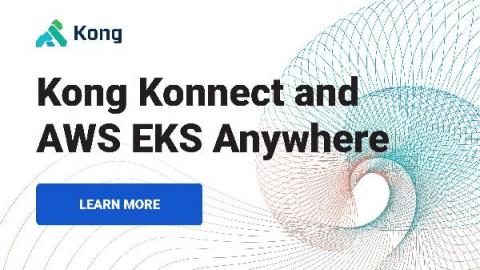Systems | Development | Analytics | API | Testing
API
Deploying Hybrid Kong API Gateway with EKS Anywhere
Modern microservices-based architectures require companies to change not just the way they build applications but also how to deploy them. Basically, the new microservices foundation should be based on two main pillars: hybrid deployments and Kubernetes orchestrator. With the complete separation of the control plane (CP) and data plane (DP), Kong Gateway fully supports hybrid deployments.
How to Develop a Cloud Native Infrastructure
More and more companies are eager to move their operations to the cloud. Yet, there’s quite a bit of ambiguity on what moving to the cloud actually means. Is your business running in the cloud while you host your database on another platform or while you rely on a third-party service to handle your payments? That’s a good start for moving to the cloud, but there are many other aspects to consider when building a cloud native infrastructure.
Salesforce Rest API
The 10 Best APIs for Start-ups in 2021
5 Trends to Look Out for in API-Led Connectivity
Service Mesh 102: Envoy Configuration
In my Service Mesh 101 article, I talked about some of the basics behind a service mesh: what it is, what it does and where Envoy fits into a service mesh. Having now covered those basics, I’d like to dig into some more in-depth content focused on the basics of Envoy configuration in a service mesh. Recall from the previous article that several different service meshes use Envoy. Istio is an example of a service mesh that leverages Envoy for its data planes.
8 Cloud Cost Optimization Tactics for Kubernetes
8 Cloud Cost Optimization Tactics for Kubernetes
If you’ve ever gotten sticker shock after receiving a surprisingly large cloud bill, this might have been your reaction… I think we’ve all been there. While the cloud makes flexible scaling possible, it has also introduced many new services one can use, resulting in increased cloud costs. In this article, I’ll go over the eight ways you can reduce your Kubernetes cloud costs. I use Amazon Web Services (AWS) as an example, but the lessons can also apply to other cloud providers.
Feature Spotlight: API Dependency Graph
As APIs become more complex, it can be easy to accidentally break connections. To prevent this, Speedscale can automatically detect and make you aware of inbound and outbound transactions running through APIs in our API Dependency Graph. The Traffic Viewer dashboard makes this information visible to independent teams working on different services. In most organizations this information is usually only known by senior engineers, team leads, and architects.










